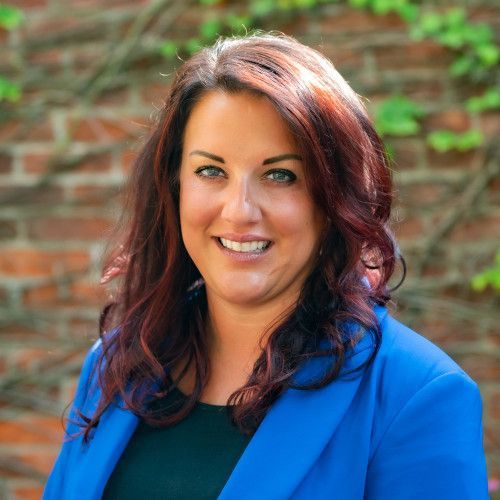PRESS / MEDIA
Continued trainings and events will be posted here!
Placement Crisis: Children are younger, problems more acute while beds, workers are harder to find
Esther Hawkins remembers a first-thing-in-the-morning office conversation she used to have with Judy Wood.
Wood, then the executive director of the Mental Health & Recovery Board of Wayne and Holmes Counties, would ask Hawkins, “How’s it going?” accompanied by a knowing look.
“The kids are safe,” would come the reply from Hawkins, the executive director of the Wayne County Family and Children First Council.
But keeping those kids safe comes at a cost – and a growing one.
The number of children in out-of-home placements has actually gone down in Wayne and Holmes counties over the past decade. Those numbers, Hawkins said, are deceiving. The Wayne FCFC has been tracking Wayne County numbers the first Friday of every month and that data shows the highest reported number – 215 – was in January of 2013. Most recently, in December of 2023, that number was 111. In Holmes County, the Department of Job & Family Services reports a high of 67 children in placement in 2019 dropped to 48 last year.
But many of these children are getting younger when they enter care and have greater needs than ever.
The average cost per day for a youth in residential treatment is $320 and 14 Wayne County youths receive this type of care. The FCFC reports seven of those receive federal money that covers about 60 percent of the cost. All 14 have mental health disorders, four have co-occurring developmental disabilities, one has significant medical concerns and three are court involved.
The average age? Just over 12 years.
Another six are placed in homes with providers from the developmental disabilities system. All have mental health disorders, five have developmental disabilities and one has a medical disability. One is court involved.
Both counties have Family and Children First Councils, designed to provide service coordination. Depending on their level of need children can be placed in kinship foster care, traditional foster care, treatment foster care, residential care, juvenile detention, Department of Youth Services, providers licensed by Board of Developmental Disabilities or hospitals.
Regardless, Hawkins said, “For any kid in out-of-home placement, the ultimate goal is to return kids to community.”
The placement crisis, Hawkins said, is unfortunately paired with a mental health crisis coupled with a pandemic. Data from the Centers for Disease Control show the number of residential treatment facilities nationwide declined by 30 percent in the last decade, while in 2020 – the first year of the pandemic – emergency room visits for children ages 5 to 11 increased by 24 percent and by 31 percent for children ages 12 to 17.
The Family First Prevention Services Act included historic reforms designed to keep children in their homes, while also focusing on reducing out-of-home placement, the most restrictive of which would be a Psychiatric Residential Treatment Facility (PRTF), for which Medicaid may pay.
But, Hawkins noted, PRTF beds also require the highest level of staffing, which is difficult in a behavioral health care system already taxed for personnel. Even traditional foster care homes have been on decline; again, affected by the pandemic when families had their own children at home 24 hours a day, seven days a week.
It is a perfect storm for a crisis.
Last spring, a Wayne County teen spent a month in Cleveland’s University Hospitals Rainbow Babies & Children’s Hospital. The youth was ready to be discharged, but the mother, working with child welfare officials, was not able to find a treatment facility and refused to pick up the youth until she could secure a safe option.
Eventually, due to the hospital filing abandonment charges, the Wayne County Juvenile Court placed the teen in the custody of Wayne County Children Services, and hospital officials brought the youth to the agency office. With no identified placement, the teen stayed two nights at the agency before custody was returned to the mother. The mother then had to take the child home due to lack of a therapeutic placement.
Two days later, police were called and the youth was arrested for domestic violence and stealing the mother’s car. The teen, still waiting for treatment, was taken to juvenile detention.
The problems in Wayne County are mirrored in Holmes County, according to Holmes County Commissioner Dave Hall.
When a child enters the placement world, the costs are first billed to insurers, if any, but the remaining costs are borne by the county of their residence. And to add to the paperwork, any children needing PRTF placement must be assessed by the Ohio Resilience through Integrated Systems and Excellence (Ohio RISE) a state-approved managed care provider. There are 254 QRTP FACILITIES– 251 in Ohio and another three out of state -- available for placements. There are only 12 PRTF beds in Ohio.
Costs billed back to the counties range anywhere from $100 per day to $1,350 depending on the level of care. Wayne and Holmes counties each have partners – like the Mental Health and Recovery Board – that pool funds to pay for out-of-home placements. In addition, Wayne County has a Children Services levy. Holmes County has no such levy, so when the money runs low, Holmes JFS goes to the county commissioners for money from the county’s General Fund. Last year, Holmes JFS placement cost totaled nearly $1.7 million. In Wayne County, that number was $5.3 million.
Two years ago, Wayne County opened Asha House in Wooster for respite, step down or emergency placements. The four-bedroom house is maintained by the Wayne Metropolitan Housing Authority, staffed by a provider licensed by the Department of Developmental Disabilities and controlled by FCFC and its partners. Children typically stay there three days for emergency placements or respite and up to three months when stepping down from residential to the community.
But it isn’t set up to handle the most aggressive children. Those go to hospitals, treatment stabilization facilities, home -- wherever a placement can be found. “We hate moving kids,” from one placement to another, Hawkins said, but “You do what you do to keep kids safe.

